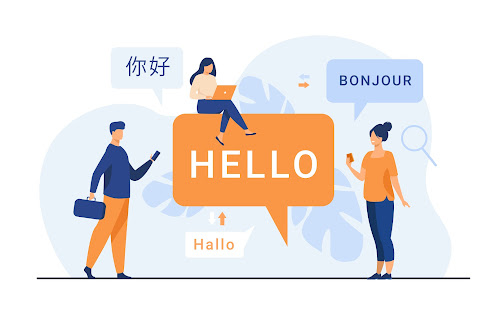5 Tips for Making Your Design Layout Work With Translated Content in Multilingual Desktop Publishing
You're finally satisfied with the look of your branding materials, but it's time to translate them. Sure, it appears straightforward: simply replace the original text with the translated text and you're done.
In reality, there are a number of issues that could arise at this point, from improper visuals to typographical errors, and you could wind up with a whole new page layout.
Multilingual desktop publishing comes into play in this situation. The process of modifying and transforming your content into different languages is known as MDP. Translation, typography, and design are all involved.
If you know your book will be translated into other languages, it's a good idea to learn more about the MDP process. To assist you, we've put up a list of five design layout ideas that perform well with translated text.
Allow for possible text expansion by leaving white space.
When translating some languages, extra room is required (for example, Western languages can take up to 30 percent more space than English would). In truth, translations nearly invariably differ from the original version. As a result, it's critical to provide enough white space in the layout to allow for future additions.
If there isn't enough room, the foreign language typesetter will be compelled to adjust line spacing or lower font size, perhaps resulting in a congested text that degrades the user experience. A lack of simple space in your page layout might damage the document's overall structure.
Use standard typefaces.
Common typefaces like Ariel and Times New Roman aren't very beautiful or trendy, but they can make your project operate more smoothly. Other foreign characters that are required for multilingual translations to various writing systems, such as Asian or Middle Eastern languages, are more likely to be supported by these typefaces.
Stick to Unicode and the more conventional Mac and PC fonts that span a range of foreign languages to ensure consistency across different language versions. You'll make your typesetter's job much easier and eliminate any potential font issues in the future this way.
Any typeface effects should be avoided.
When creating your design layout, avoid using italics, bold, underlining, and color effects. True, some languages (such as West European languages) are 100% certain to support these effects, but what happens if you wish to broaden your markets like Asia or the Middle East? These countries do not use italics in their languages because italics can distort text and cause problems with some translation tools.
It's advisable to deal with foreign language typesetters that specialize in different scripts and character-based languages to prevent problems like these. They'll make sure the layout of your design is consistent and appealing in all languages.
Allow for image and graphic versatility.
We recommend sticking to more universal graphics and pictures when selecting graphics and images for your design layout rather than being overly particular. For example, if you decide to use people's faces in your design, consider if they would appeal to individuals from many cultures. Make sure your graphic element selections are either universal or culturally insensitive.
Otherwise, make sure you're prepared with visuals for each market you're targeting.
Employ multilingual typesetters who are experts in their fields.
It's a one-of-a-kind multilingual desktop publishing project. After all, it's the key to the success of your entire worldwide campaign! Leave typesetting to the pros to ensure your design layout fits seamlessly with translated text.
At DTP Labs, we provide expert typesetting and desktop publishing services that are quick, accurate, and dependable. We specialize in all major language combinations, even the uncommon ones, ensuring that we can create authentic foreign-language documents that resonate with the intended audience. Thanks to our unrivaled typesetting experience, we can ensure that your page layout is properly structured, attractive, and successful.
Multilingual desktop publishing necessitates a unique skill set as well as an artistic vision. Collaboration with amateurs will undermine your global efforts. At the most competitive rates in the industry, DTP Labs can provide your organization with a guaranteed-quality multilingual desktop publishing service. Feel free to contact us at: info@dtplabs.com




Comments
Post a Comment